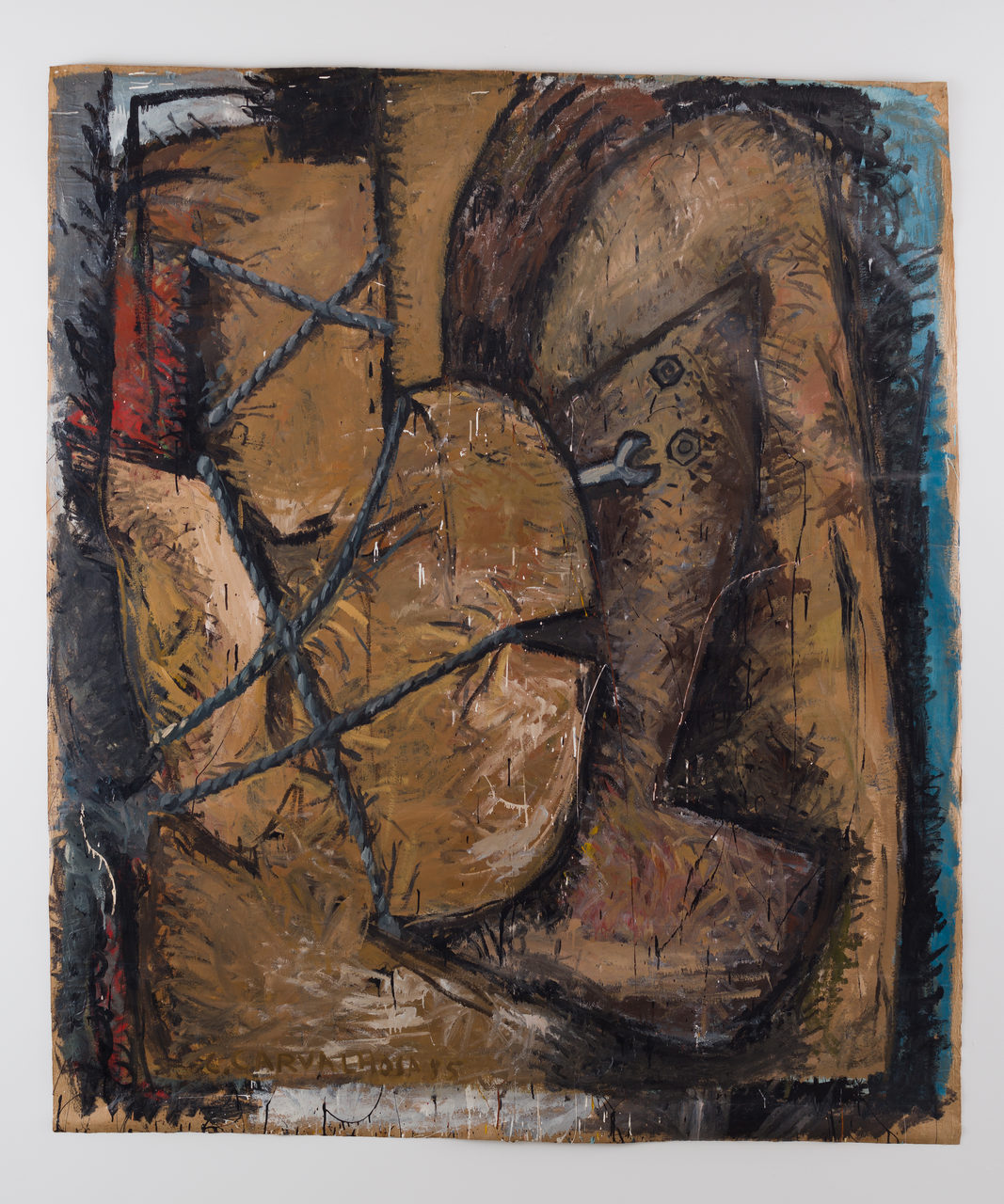Carlito Carvalhosa, an artist who alongside other members of the Casa 7 group, formulated a Brazilian response to Neo-expressionism, has died. After the 1980s, the artist widened his practice beyond painting, maintaining a desire throughout however that his work would provoke a visceral response.

Sharing a studio in the mid-1980s with Nuno Ramos, Fabio Miguez, Paulo Monteiro and Rodrigo Andrade, Carvalhosa became interested in the German style of painting; the group exchanging motifs and composition styles, though producing their own individual work. In 1984, they agreed to all paint solely with enamel on craft paper, subsequently progressing to oil on canvas the following year. An untitled work from 1985 by Carvalhosa depicts what seem like brown lumps of rusted metal bound by wire, a spanner and two bolts visible. Another work the same year, using paraffin and wax on wood, is more abstract but with its dark brown and green patches could perhaps be a muddy, grimy landscape viewed from above. This murky palette is replicated across paintings made by other artists within Casa 7 that year.
After the group disbanded at the end of the decade, successful in their aim of reasserting painting as a medium within Brazil’s art scene, Carvalhosa continued to make work with wax, utilising the material’s sculptural properties. Smaller in scale than his previous work, Untitled (1992) for example is a cuboid block of wax and peachy pigment on canvas, from which protrude finger- and nipple-like appendages. The artist also started to experiment with porcelain sculpture.

By the turn of the millennium Carvalhosa was painting on aluminium and continued to branch out into different mediums, including sculpture, installation and sound. In 2011 he created Sum of Days for the atrium of the Museum of Modern Art, New York. The vast work consisted of a super lightweight white textile curtain which hung the height of the space, the natural airflow and movement of the visitors causing it to be in perpetual, rippling, motion. Within the interior space created by the curtain, the artist installed several speakers and microphones that recorded the ambient noise of the museum and its visitors, and relayed it back, building, as the the exhibition proceeded, an increasing wall of sound. Sound artists and musicians, including Philip Glass and Carla Kihlstedt, performed within the space.
In 2013, inside the white cavernous gallery of the Oscar Niemeyer-designed Museum of Contemporary Art at USP, São Paulo, Carvalhosa installed dozens of logs stretching across the space irregularly. It was, the artist said, like a giant game of pick-up sticks, the playfulness and mundanity off the material, punctuating the reverential feel of the building’s iconic modernism.
His work was collected by the Cisneros Fontanals Art Foundation (CIFO), Miami; Museu de Arte Moderna de São Paulo; Museu de Arte Moderna do Rio de Janeiro and Pinacoteca do Estado de São Paulo, São Paulo, Brazil.